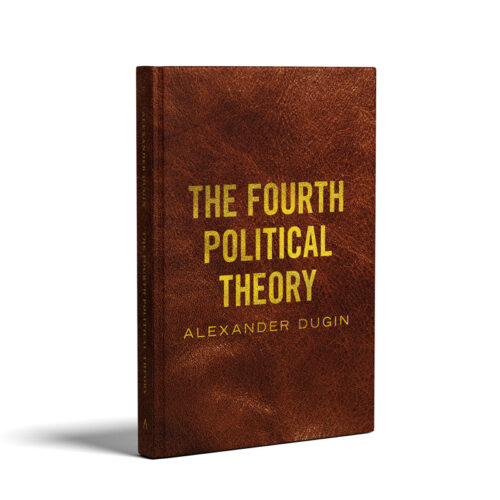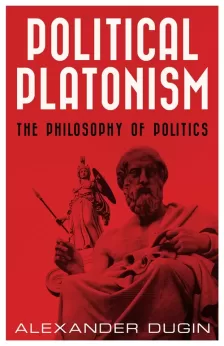PIZARRO
Like Cortés, Francisco Pizarro rose out of nothing, but was driven to greatness by the desire for glory and conquest.
In fact, the circumstances of Pizarro’s birth were even more austere: he was the bastard son of infantry colonel Gonzalo Pizarro, raised in obscurity by his poor mother and grandparents. He never received any formal education and grew up working as a mere swineherd in absolute poverty. Because of this simple origin, little else is known about Pizarro’s life before his journey to the New World; however, it is likely that he participated in manorial wars and similar local conflicts, perhaps even joining a campaign in Italy. Such a background would help to explain his later military prowess… but again, this is unverified. Perhaps a young Pizarro found a taste for battle in these local clashes, learning strategy and tactics; or, perhaps he was simply gifted with boldness and an inclination toward strategy.
Either way, Pizarro saw the New World as his only chance to ascend beyond his station, and joined an expedition to modern-day Colombia in 1509. Like so many other men of that age, Pizarro wanted to test himself in an environment of pure merit, to be the settler of unknown lands and the discoverer of unseen riches. The New World presented the chance to test oneself in a place of infinite opportunity and infinite risk. Its call was particularly felt by men like Pizarro, who had higher ambitions than their birth-given station.
However, aside from wealth, the call of the frontier for its own sake was particularly strong in Pizarro. Upon arriving in the New World, he immediately joined campaigns under Enciso and Balboa, diving headlong into the complex world of native alliances and unforgiving nature.
While exploring alongside Balboa, Pizarro became one of the first Europeans to see the Pacific Ocean, a difficult journey with a triumphant zenith. This experience seemed to satiate him for a few years, during which he worked his way up the social ladder of Terra Firma (Spanish territory on the mainland). This single-minded rise to power culminated in his promotion to magistrate and mayor of the recently-built Panama City. It was at this time that Pizarro first heard whispers of Piru, an untouched land of mountainside golden cities – including the famed El Dorado.
He began planning an expedition deep into South America with another conquistador, Diego de Almagro, and a priest, Hernando de Luque. They set off from Panama with too few men and meager supplies, but nonetheless had lofty goals and plenty of optimism.
However, optimism and ambition alone do not make for success. Pizarro’s first expedition would end in disastrous failure – as would the next. After a full two years of brutal weather, little food, and belligerent natives, Pizarro found himself waiting on a small island for yet another round of reinforcements.
But this time, they would not come – the governor of Panama, Pedro de los Ríos, had finally declared the expedition a lost cause. When two of Ríos’ ships arrived to take Pizarro and his men back to Panama, he rebuked them and refused to be recalled, defending the voyage in a frantic speech: “There lies Peru with its riches; here, Panama and its poverty. Choose, each man, what best becomes a brave Castilian. For my part, I go to the south.”1
This act must have looked like insanity; perhaps some tropical disease had eaten at Pizarro’s sense of reason. The new arrivals tried to reason with him, but it was of no use – he would not give up on the expedition yet.
A mere thirteen men stayed with Pizarro – a group known today as the Famous Thirteen. This handful of men, drunk on the pioneer spirit, refused to accept failure. They would continue to endure austerity and hardship for the chance of success, of true conquest. After the group sent by Ríos departed for Panama, the Thirteen constructed a boat from local materials and sailed to La Isla Gorgona – an impressive feat of seamanship for what amounted to little more than a raft. For seven months they waited, betting that their sheer conviction would bring more supplies and recruits.
And seven months later, precisely that happened. After much cajoling, Pedro de los Ríos had finally agreed to send a ship to their rescue, with explicit instructions that it would return to Panama in short order and formally end the expedition. However, like Cortés, Pizarro, Luque, and Almagro had little concern for orders to stop their exploration. The voyage would continue south.
It was on this last-ditch excursion that Pizarro and his followers experienced their first success, meeting friendly natives and establishing a camp in Tumbes. Scouting expeditions returned with wild reports of immense wealth and untouched land. The conquistadors had found their inroad to Peru – a land governed by a powerful empire with an apparently resplendent capital, echoing the rumors of advanced, golden cities.
The men returned to Panama with samples of Peruvian wares, but were met with disinterest from Ríos (whose orders they had just spurned). Undeterred, Pizarro left for Spain to appeal directly to royal authority. He impressed Charles V with his stories of rich lands in Peru, as well as his samples of gold and llamas – but after negotiations were put on hold, it was Queen Isabel who would finally sign the charter for the conquest of Peru. Pizarro was named Captain-General of the expedition and charged with raising 250 men: armed, trained, and fit to conquer an empire of over 10 million.
The expedition faced difficulties from the moment they landed in Peru. After an initial skirmish with natives at the Battle of Puna, they disembarked again at Tumbes. Here, a warm welcome was expected; however, Pizarro and his men found the village deserted and nearly destroyed.
They soon learned from other natives that Punian tribesmen had raided Tumbes – was this retribution for trading with the Spanish, or part of an unrelated conflict? The conquistadors could not tell. This was a sobering moment for the expedition; the land around them was suddenly all the more hostile and unknown, and their planned safe haven at Tumbes would have to be forsaken. The group trekked inland, facing ambushes that could materialize at any moment out of the jungle. Pizarro issued an order to wear armor at all times, causing chafing (both literal and metaphorical) among the men. Skirmishes were a common occurrence, and disease eroded the already small force. To Pizarro and others who had partaken in the original explorations of the region, this must have echoed their earlier, failed voyages. Supplies were dwindling, the men were unmoored from any support, and the plan went no further than simply marching forward.
Here, Pizarro once again snatched victory from the jaws of defeat. The expedition came upon a midsize village and took it in the name of Spain, naming it San Miguel. This settlement, the first true Spanish holding in Peru, would serve as an important launching-point for the rest of the conquest, and a much-needed place to rest and resupply in the meantime.
San Miguel was also the first repartimiento in the New World, a type of governance which would eventually come to replace the encomienda system. Repartimientos were based on tribute labor and, in fact, were a direct adaptation of the Incan system already in place throughout Peru. Historians like Zinn tend to describe Pizarro’s conquest of San Miguel de Piura as “enslaving the natives,” but in reality, the situation was more in line with a political coup. The natives continued their way of life as unenslaved peoples that owed intermittent labor to the controlling government.
However, Pizarro soon left the relative safety of San Miguel, seeking an audience with Incan authorities. He left 50 men to govern the town, and advanced with the rest of his forces into the mountains.
It was then that the conquistadors began to learn more about the contemporary situation within the Incan empire. Fresh out of a bloody civil war, the empire had stabilized under Atahualpa, a demigod-king straight from the annals of Antiquity. His armies were well-equipped and numbered in the tens of thousands. Clearly, the immense wealth of Peru had allowed for a prosperous, complex civilization, arguably more advanced than the Aztec conquered by Cortés (both culturally and militarily).
It became clear that a mere show of force would not be sufficient. Pizarro needed something shrewder, more daring.
Thus began a protracted battle of wits between Pizarro and Atahualpa, starting with the September 1532 dispatch of Hernando de Soto to an Incan garrison. Pizarro chose de Soto to make contact due to his demonstrated courage and intelligence – traits which would drive him to later explore swaths of North America, including leadership of the first European crossing of the Mississippi. But here, de Soto was still just a captain and envoy, seeking an audience with a king who controlled a territory the size of a considerable European state.
By this point, Atahualpa had heard reports of the Spaniards: strange men wearing ornate metal armor, carrying weapons unlike anything known to the Inca. However, due to Atahualpa’s recent success in the war against his brother, he did not take the Spanish seriously; even with their odd dress and rumored supernatural powers, the small group clearly posed no threat to his massive legions. He regarded them with curiosity, and, like Moctezuma, aimed to bring them closer in order to learn more about them (and, if necessary, destroy them).
After a long series of envoy meetings – painstakingly translated, tense affairs – the situation looked grim for Pizarro and his 180 men. Throughout the negotiations, Atahualpa had drawn the Spaniards increasingly deep into the mountains, promising them a meeting at Cajamarca. An Incan noble guided the conquistadors through fortified mountain passes, features which Pizarro noted would prevent any attempt at retreat. An initial meeting between de Soto, Friar Vicente, and Atahualpa made it clear that the Incan monarch was not willing to capitulate to Spanish demands – but the Spanish nonetheless had to advance inland to preserve the image of invincibility (seemingly the only factor that had prevented an attack so far).
Their destination, Cajamarca, was a valley town, flanked by mountains which were packed with some 80,000 Incan soldiers. The town’s inhabitants had been relocated prior to Pizarro’s arrival, and the expedition found the streets eerily quiet – presumably to prepare it for an overwhelming Incan attack.
Here, it became clear that the Spanish had overextended themselves. Any attempt at fighting would be futile, and retreat was off the table due to the easily blocked mountain passes. Pizarro also noted a time constraint: the longer the Incans could observe the conquistadors, the less scared they would be of their rumored “supernatural powers.” They were trapped in hostile territory and drastically outnumbered. The situation seemed hopeless.
However, even with these impossible odds, Pizarro was indefatigable. Upon their arrival on November 15th, he gathered his officers and devised perhaps the most daring plan of the era.
The Spaniards would capture Atahualpa from the middle of his forces. Outnumbered nearly 450:1, the conquistadors needed such a bold, audacious move for any hope at survival – much less victory. However, through subterfuge and the use of shock and awe, Pizarro reasoned that they could once again snatch victory from the jaws of defeat.
Pizarro had invited Atahualpa to visit the next day, and it was then that the conquistadors would spring an ambush on whatever forces accompanied the Incan king. Pizarro’s men concealed themselves in alleys and buildings, hiding cavalrymen around corners and positioning their small cannons in windows overlooking the town square. To their great concern, a large segment of the Incan army marched ahead of Atahualpa. In a dramatic turn of fate, the soldiers did not occupy the city, instead setting up camp outside its walls as a show of force. However, this did little to ease the tension among the Spanish, who held their positions in excruciating silence.
The meeting commenced just before sunset. Atahualpa entered Cajamarca with a massive display of wealth and splendor: his retinue of over 8,000 was brightly dressed and laden with gold and silver ornaments. The king himself was carried on a silver, parrot-feathered litter, and the nobles preceding him sang ceremonially.
Only Friar Vicente and a translator emerged to meet Atahualpa, much to the confusion of the Incan procession. Vicente was given a golden cup of chicha, which he did not drink for fear of poison. Instead, he gave the king a missal and proceeded with explaining the Catholic faith. Furious with the friar’s apparent insolence, Atahualpa threw the missal to the ground and threatened to kill Vicente for his disrespect.
At this tense moment, Pizarro ordered the attack. The cannons fired, and the Spanish charged from their positions. It is often stated in modern studies of the event that Atahualpa’s retinue was completely unarmed, as a sign of good faith. While it was a diplomatic procession, this assertion is not fully true – they carried knives, lassos, and ceremonial axes, on top of outnumbering the concealed Spaniards 45:1.2 Had they tried to overwhelm the Spanish, the effort would have likely been successful and the ambush stymied.
However, the Spanish had made good use of their mystique among the Inca. Until this point, cannon and harquebus usage had been limited in order to conserve supplies – but here the Spanish unleashed an overwhelming volley from all sides. Though their firearms were limited in number, the sudden noise and smoke terrified the Incan nobles. The conquistadors had also affixed bells to their saddles for added noise and psychological impact. This made their initial cavalry charge louder and more imposing.
The resulting scene was pure chaos. Atahualpa’s retinue scattered, falling everywhere to Spanish blades and shot. In an effort to escape, a portion of the crowd trampled Cajamarca’s walls, fleeing toward the soldiers encamped outside. Apparently terrified, this portion of Atahualpa’s army fled as well.
In the town, the Spanish killed or took prisoner most of those who remained. During the initial chaos, Spanish soldiers pushed through the crowd to Atahualpa, cutting his carriers down and pulling him from his litter. Pizarro, in the thick of the fighting, charged toward the king. Just as a Spanish infantryman was about to kill the Incan king, Pizarro stopped the man’s sword with his hand. The resulting wound was the only casualty sustained by the Spanish.
Wildly outnumbered and trapped in enemy territory, they had effectively conquered the Incan empire in one daring move. It was an act that would look at home if listed as an exploit of Odysseus.

~
Pizarro’s mistake came in the months and years that followed this conquest. After meeting no resistance on the trek to Cuzco… Pizarro stopped.
This man, clearly destined for a full life of exploration and combat, instead settled into governorship of Peru. He became bogged down in politics, rather than continually pushing the frontier forward. As a result, he spent his later years engaged in debate and intra-Spanish strife, namely with his former ally Almagro.
When he won this conflict in 1538 and executed Almagro, Pizarro effectively signed his death warrant. Only three years later, armed supporters of the other conquistador would burst into his home, attacking his family and guests, intent on replacing him as governor.
Pizarro, 63 at the time, put up an admirable resistance – killing two attackers and wounding a third. He was finally defeated only when “he became too exhausted to brandish his sword.”3 The conqueror of Peru’s last act was to draw a cross on the ground – in his own blood – and kiss it.
Footnotes
110. Prescott, W. H. (2011). The History of the Conquest of Peru.
212. Stirling, Stuart (2005). Pizarro: Conqueror of the Inca.
313. Weiner, Eric. “Coming to America: Who Was First?” NPR, 8 October 2007.










A true Atlantean hero-conqueror. Soon we will follow his example and take Latin America again.